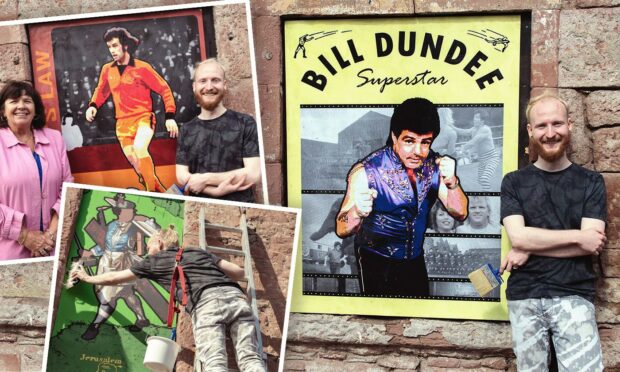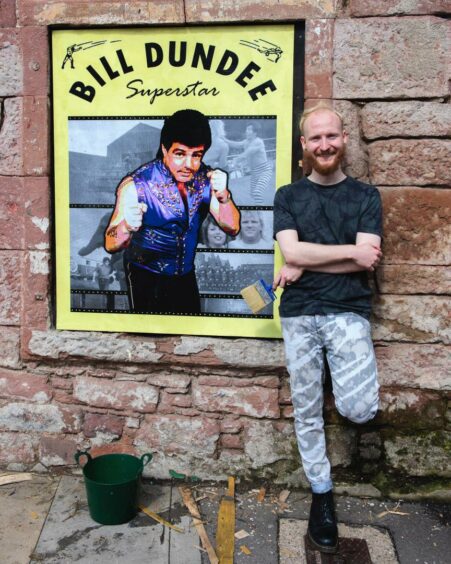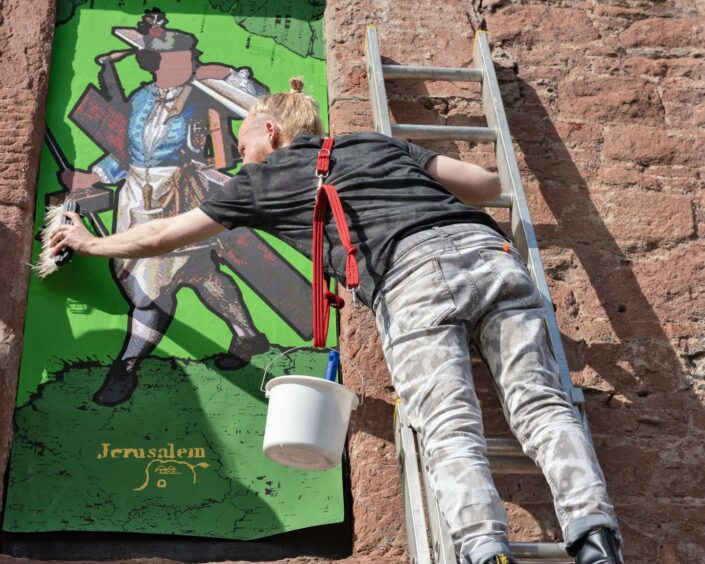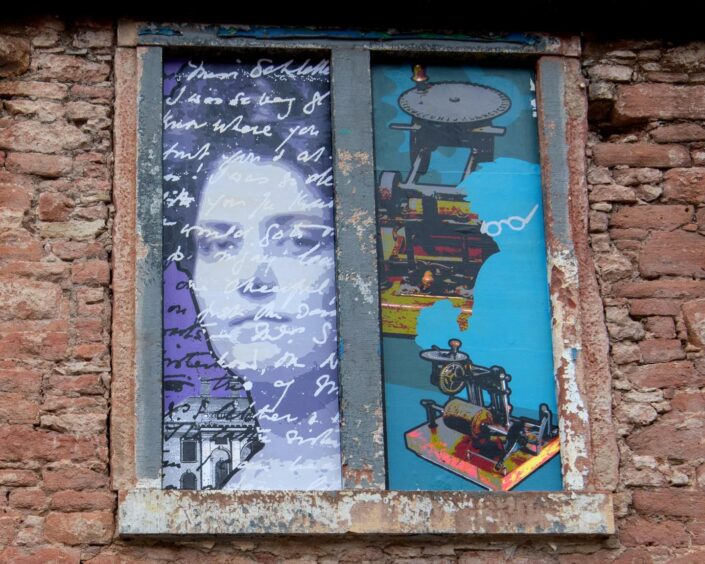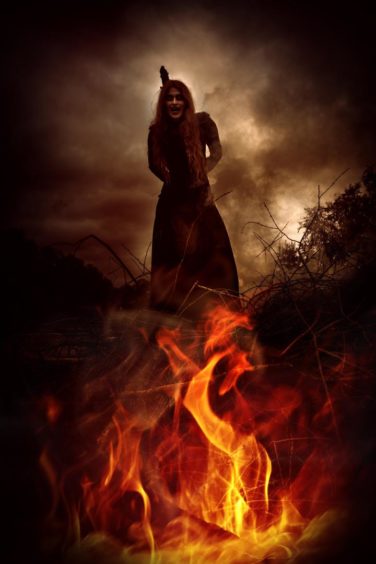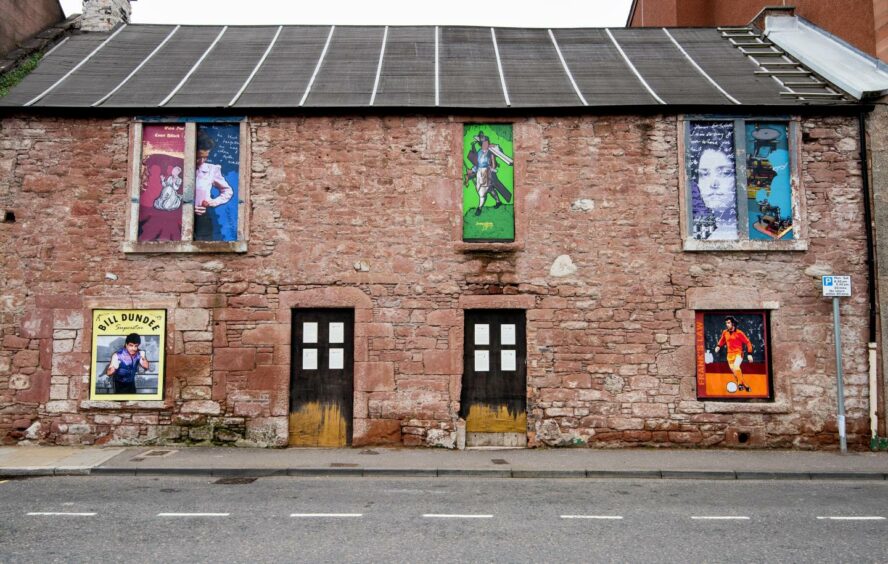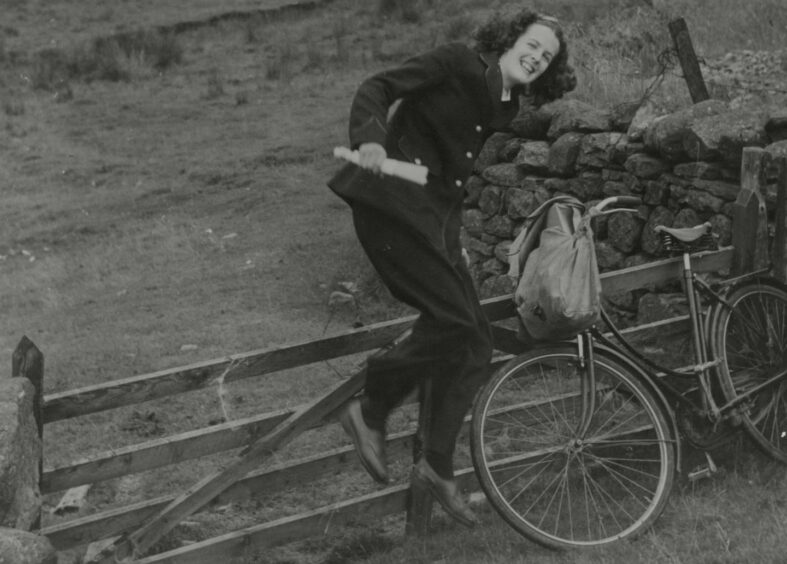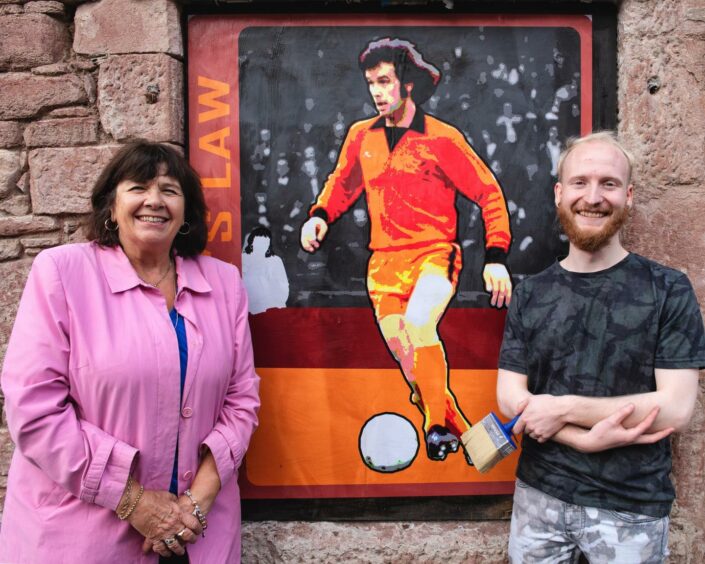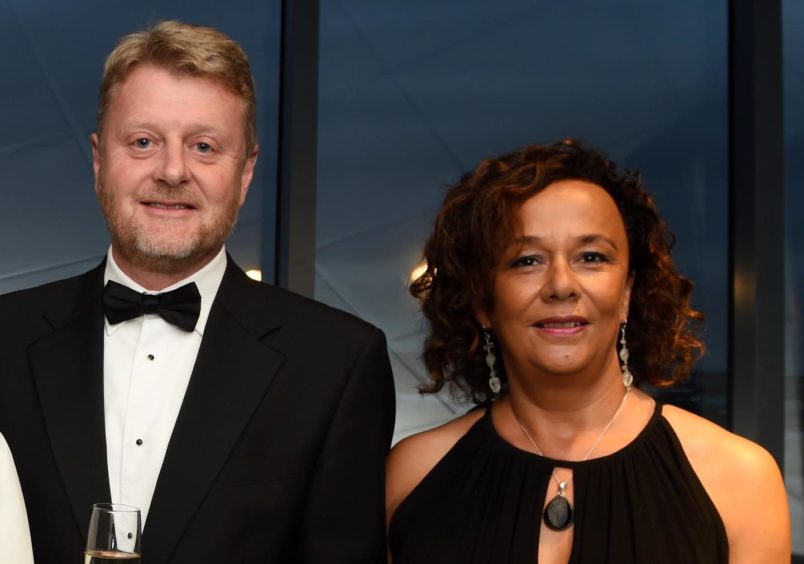Kirriemuir’s first recorded person of colour and a champion wrestler are among the eclectic figures being commemorated in the town.
The murals are now on display on the old Hooks hotel in the main square.
For a town of its size, Kirriemuir punches above its weight when it comes to producing famous sons.
Peter Pan author JM Barrie and AC/DC singer Bon Scott are immortalised in bronze while Sir Hugh Munro and the Cameron family are etched in stone.
But what about the town’s unsung heroes not yet publicly commemorated?
The Signs of Change community public art project sought to change all that and James Wyllie has produced a digital collage of seven extraordinary figures.
So who are these Kirriemuir heroes?
Bill Dundee
Born William Cruickshanks in Kirriemuir in 1943, the youth that was to become ‘Superstar Bill Dundee’ was raised by his grandparents in the town.
By 15, he quit school and was working as a bothy loon at Balnagarrow Farm.
Two years later, during which time he was arrested three times for fighting, the Cruickshanks family emigrated to Australia.
By his 20s he became involved in professional wrestling and made a name for himself in Memphis where he regularly teamed and feuded with Jerry Lawler.
He is still involved in the wrestling community.
James Fyffe
Born to William Fyffe and a black woman in Jamaica, James Fyffe emigrated to Kirriemuir as a young man at some point during the 1790s.
A living legacy of the county’s connection to the transatlantic trafficking of enslaved African people, Fyffe was one of several people of colour who called 18th century Angus home.
During his time in Kirriemuir, Fyffe commenced a career in carpentry.
With the assistance of family he attempted to settle securely in Scotland but never achieved financial independence, relying on small advances from family members to sustain his craft.
He eventually moved to Glasgow so he could save for passage to Jamaica in 1804.
In Jamaica he lived securely enough to pay back his family who had supported him in Scotland.
Violet Jacob
Violet Augusta Mary Frederica Kennedy-Erskine was born at the House of Dun near Montrose in September 1863.
She was educated at home, but the House of Dun’s large library was open to her, and she showed an early interest in art and literature.
In 1894 Jacob married Arthur Otway Jacob, an Irishman serving as a lieutenant with the 20th Royal Hussars.
The locality of North Angus was the base of most of the prose and fiction she would become renowned for.
Arthur died in 1936, and Violet returned to live at Marywell House in Kirriemuir where she continued to write poetry for the last 10 years of her life.
She is buried beside her husband at the graveyard at Dun kirk.
Janet Walker
Residing near what was known as the Witch Pool, Janet Walker was one of at least 660 people tried for witchcraft during the Great Scottish Witch Hunt of 1661-62.
Walker was one of three recorded cases of innocent people charged with witchcraft in Kirriemuir.
She was accused of practising witchcraft and confessed after being tortured.
Walker was condemned to death by strangulation.
She was then burned at the stake on Court Hillock so as to leave no body for burial.
The number of people accused was double that of those unfortunates who were accused during the infamous Salem witch trials of 1692-1693, immortalised in Arthur Miller’s The Crucible.
Peter Hood
Peter Hood was born in 1833.
He was a blacksmith’s son but ill-health forced him to give it up and he became a watch and clockmaker.
He carried out this trade in the attic of a little cottage, where he lived in semi-seclusion with his two unmarried sisters.
Here, in addition to watches and clocks, he built many original and highly ingenious mechanisms.
In 1857 he invented the first typewriter by building a typewheel typewriter plate.
The Hood typewriter, along with one made three years later by another Scot, John Cox, is in the Science Museum of London.
He died in 1873.
Jean Cameron
Jean Cameron, a postwoman in Glen Cova, was responsible for a change in uniform for female workers in the 1940s.
Faced with jumping over streams and navigating stiles on her round, she asked to wear trousers instead of the standard-issue blue skirt.
The General Post Office, as it was then called, agreed to issue trousers.
Cameron became something of a celebrity, and the trousers became known as ‘Camerons’ in honour of their pioneer, with 14,000 pairs being worn by the end of 1943.
In donning the uniform and refusing a skirt, Cameron signalled a change in the public’s perception, and women’s self-perception, of their role in society.
She died in 2018.
Frank Kopel
Born in Falkirk in 1949, Kopel first signed for Manchester United as a schoolboy and went on to play alongside George Best, Denis Law and Bobby Charlton.
After three years at the club, he played a further three seasons in England, for Blackburn Rovers, before signing for Dundee United in 1972.
He lifted the League Cup twice and scored a famous volley against Anderlecht in the UEFA Cup in 1979 which took his side through to the next round.
Kopel was diagnosed with dementia when he was 59.
He died six years later, aged 65, at his home in Kirriemuir.
The Frank’s Law campaign led by his wife Amanda to end age discrimination in the care system came into effect in 2019 following a six-year fight.
So how did the Hooks project happen?
“Basically the idea sprung up and grew fantastic arms and legs when I thought of putting a tribute in the town to Bill Dundee,” said James Wyllie.
“The idea was on the back burner until I saw the open call and thought a public art design could be a great alternative.
“The Hooks project was proposed by Signs of Change, and I jumped at the chance as that was six extra canvases!
“Having Frank Kopel was an obvious addition due to his sporting career and the very real legacy Amanda has left.
“It was a chance occurrence I read in a dissertation of James Fyffe, Kirrie’s first recorded person of colour.
“This was part of my own learning last year in light of Black Lives Matter.
“The other folk have fascinating stories as well.
“Even if we only know scant pieces of their lives, it’s what makes Kirrie such an interesting place.
“I am delighted to be given the opportunity to brighten up a wee corner of my hometown.”
Other artwork is across the town
The Hooks murals are part of the Signs of Change project which is brightening up the town and being coordinated by volunteers from the DD8 Music charity.
The Signs of Change project was founded by local philanthropist, Neil Stevenson.
The project was inspired by a holiday Neil and his wife Sheila had in the Spanish village of Senjia.
This small rural community had been transformed by an inspired public art programme, and Neil thought that Kirriemuir could benefit from something similar.
Tragically, Neil passed away before the first artwork was completed, but the project has continued on in his memory.
Graham Galloway from Kirrie Connections said: “So far there are five new works of art in the town through the project, with more in the pipeline.
“The artworks have been produced by both local artists and local school children, who have been involved in a series of summer workshops through Angus Council’s ‘Summer of Play’ sessions.
“Feedback from the community has been overwhelmingly positive, and the art has brought some much-needed joy to the town after a difficult year.
“The plan is that Signs of Change will be an ongoing project, with new artworks being created every year.
“Eventually, we would like to see an art trail around the town, that could also take in many of the other amazing sites and landmarks in Kirriemuir.
“We also hope that the project is inspirational to the local community, and allows a culture of creativity and fun to continue to develop in the town.”
